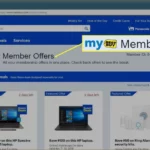Learning a new language can be a daunting task, but with the help of technology, it has become more accessible than ever before. One such tool that has gained popularity in recent years is Rosetta Stone. With its immersive approach and emphasis on visual and auditory learning, Rosetta Stone claims to be one of the most effective language-learning programs available. But what exactly is Rosetta Stone, and how does it work? In this article, we will explore the features and benefits of Rosetta Stone, as well as some tips and tricks for using it effectively. Whether you’re a language teacher looking to incorporate technology into your classroom or an individual looking to learn a new language on your own, this article will provide valuable insights into the world of Rosetta Stone.
Contents
What is Rosetta Stone?

Rosetta Stone is a language learning software that uses an immersive approach. The program doesn’t provide any instruction in the user’s native language, instead, it relies on pictures, audio, and repetition to teach vocabulary, gender, plurals, and some verb conjugations. The software offers a voice-recognition system that evaluates the user’s pronunciation and adjusts the level of accuracy required accordingly. Rosetta Stone is useful for building a strong foundation in a new language, but it doesn’t provide complex grammar, cultural context, or nuance.
How Does it Work?
Rosetta Stone uses an immersive approach to language learning. There is no instruction in your native language, only pictures and words associated with them that you see and hear. You are then prompted to speak or write the word. A voice-recognition system decides whether you’ve said it correctly. The same words and images pop up again and again to help build your vocabulary. As you progress, you move on to short phrases and statements.
The program is made up of 20 learning units, each covering a different thematic topic or category, such as greetings and introductions, or professions and hobbies. Within each unit, there are four primary lessons. Rosetta Stone’s method focuses on simple nouns and verbs and uses deductive logic to teach. It can be useful for learning vocabulary, gender, plurals, and some verb conjugations, but it’s not as helpful when it comes to complex grammar, nuance, or cultural context.
For those struggling with repetition fatigue, there are games and activities found in the Extended Learning section. There are also lessons on language for describing emergency situations, business and industry, and dining and vacation.
Rosetta Stone has improved in several areas, such as by giving learners the opportunity to move directly into content that is most relevant to them. This includes focused topics like Travel, Work, Family, and Basic and Beyond. However, because you don’t get any instruction in your native language, it’s impossible to know certain details such as whether a word is formal or informal.
The Rosetta Stone program uses an immersive approach to language learning with a heavy emphasis on repetition and deductive logic. It’s useful for learning vocabulary and some verb conjugations, but not as helpful for more complex grammar or cultural context.
What Makes it Unique?
Rosetta Stone’s unique approach sets it apart from other language learning software. The program is designed to immerse learners in the language, using pictures and audio to teach new words and phrases. One of the most unique aspects of Rosetta Stone is its emphasis on learning through context. Rather than memorizing grammar rules and vocabulary lists, students learn by seeing and hearing words used in context. This approach helps learners to think in the language they are learning, rather than translating from their native language.
Another unique feature of Rosetta Stone is its patented TruAccent™ technology, which uses speech recognition technology to help learners improve their pronunciation. This feature gives learners instant feedback on their pronunciation, helping them to refine their skills and speak more fluently.
Rosetta Stone also offers a range of content that is tailored to individual learners’ interests and needs. For example, learners can choose to focus on specific topics such as travel, work, or family, and can access advanced lessons on language for describing emergency situations, business and industry, and dining and vacation. This personalized approach means that learners can get the most out of the program, whether they are studying for personal or professional reasons.
Rosetta Stone’s immersive, context-based approach, TruAccent™ technology, and personalized content make it a unique and effective tool for language learning. Its emphasis on real-life conversations and situations helps learners develop practical skills that they can use in the real world.
Rosetta Stone for Teachers

Rosetta Stone is not just for students, but also for teachers. With , educators can gain access to a suite of tools that make teaching language easier and more effective. Teachers can benefit from features such as immediate positive feedback based on the pronunciation of native speakers, and a scaffolded approach to language learning. Additionally, discounts for teachers are available, making it even more accessible for educators who want to enhance their language teaching skills. Rosetta Stone for Teachers can be a valuable tool for language educators looking to improve their teaching methods and help their students achieve better language learning outcomes.
How Can it Benefit Teachers?
Rosetta Stone offers several benefits to teachers who use it in their language classrooms. One of the main benefits is the immersive approach that the program takes, which is designed to help students learn their target language faster and more effectively. With Rosetta Stone, students are surrounded with their target language from the start, which helps them to become more comfortable with the language and to pick up new words and phrases more quickly.
Another benefit of Rosetta Stone for teachers is the suite of tools that the program offers. Educators gain access to a variety of resources that make teaching language easier and more effective. For example, teachers can use the program’s scaffolded approach to language learning to help students build their vocabulary and improve their pronunciation. They can also use the program’s interactive exercises and games to keep students engaged and motivated.
Rosetta Stone offers discounts for teachers, which can help to make the program more affordable for schools and language programs. Teachers can also take advantage of the program’s online resources, which include lesson plans, worksheets, and other teaching materials.
Rosetta Stone can be a valuable tool for language teachers who are looking for a comprehensive and effective program to help their students learn a new language. With its immersive approach, suite of tools, and discounts for teachers, Rosetta Stone is a great choice for educators who want to enhance their language teaching programs.
Discounts for Teachers
Rosetta Stone offers discounts for teachers interested in using their software to enhance their language learning capabilities. These discounts can be accessed by visiting the Rosetta Stone website and signing up for their teacher discount program. With the discount, teachers can access the full range of Rosetta Stone language courses at a discounted rate.
In addition to the teacher discount program, Rosetta Stone also offers free demos for teachers to try out their software before committing to a purchase. This allows teachers to get a feel for the software and determine if it is the right fit for their classroom.
Other discounts available for teachers include discounts on educational software and classroom resources, such as ABC Mouse, Teachers Pay Teachers, and Kid Horse Game. These resources can be used to supplement language learning and enhance the overall learning experience for students.
The discounts available for teachers make it easier for them to access the resources they need to provide the best possible education for their students. By taking advantage of these discounts, teachers can save money and provide a more comprehensive learning experience for their students.
If you want to learn more about ABC Mouse, you can check out ABC Mouse for Teachers or ABC Mouse Discounts. If you’re interested in selling your own educational resources, you can learn more about selling on Teachers Pay Teachers.
How to Use Rosetta Stone

When using Rosetta Stone, it’s important to follow a step-by-step guide to get the most out of the program. First, start with the core lessons and work your way through the vocabulary, grammar, reading, writing, and speaking sections. Don’t be afraid to repeat lessons to reinforce what you’ve learned. Tips and tricks for success include practicing regularly, using headphones for listening exercises, and disabling the voice recognition feature if it’s not working well for you. It’s also helpful to supplement your learning with games and activities found in the Extended Learning section. One such game is the Kid Horse Game, which helps with vocabulary and sentence structure. Using Rosetta Stone requires dedication and a willingness to immerse yourself in the language.
Step-by-Step Guide
Step 1: Choose Your Language
The first step in using Rosetta Stone is to choose the language you want to learn. Rosetta Stone offers a variety of languages, from Spanish and French to Mandarin and Arabic. You can select your language by clicking on the language icon on the main screen.
Step 2: Set Up Your Account
Once you have selected your language, you will need to set up your account. This involves providing your email address and creating a password. You will also need to select your subscription plan.
Step 3: Start Your Lessons
After you have set up your account, you can begin your lessons. The lessons are divided into units and each unit covers a specific theme, such as travel or work. Within each unit, there are multiple lessons covering different topics on the theme of the unit.
Step 4: Complete the Core Lesson
The core lesson is the main part of each unit. It introduces new vocabulary and grammar and provides practice exercises to help you learn. The lessons are highly visual and are based around listening to the new words and grammar, then doing drag and match or fill in the blank exercises.
Step 5: Practice Pronunciation, Vocabulary, and Grammar
After completing the core lesson, you can practice your pronunciation, vocabulary, and grammar skills through additional lessons. These lessons are designed to reinforce what you learned in the core lesson and help you master the material.
Step 6: Take Review Sections
Rosetta Stone includes review sections to help you reinforce what you have learned. These sections allow you to practice the material you have covered in previous lessons.
Step 7: Track Your Progress
Rosetta Stone allows you to keep track of your progress as you go through the lessons. You can see how many lessons you have completed, how many you have left, and how well you are doing.
Step 8: Try Extended Learning
Rosetta Stone offers extended learning activities, such as games and stories, to help you reinforce what you have learned. These activities are found in the Extended Learning section.
Remember, repetition is necessary to some degree with any learning process. With Rosetta Stone, however, it’s heavy and comes without cultural context. If you find yourself reeling from repetition fatigue, try some games and activities instead.
Step 9: Practice, Practice, Practice!
The key to success with Rosetta Stone is practice. The more you use the program, the better you will become at the language you are learning. So, stick with it and don’t be afraid to make mistakes.
If you’re a teacher, Rosetta Stone can benefit your students in a variety of ways. Rosetta Stone offers discounts for teachers. For more information on how to get these discounts, visit /abc-mouse-free-for-teachers/.
Tips and Tricks
Tip 1: Make sure to take advantage of the extended learning section. There, you can find games and activities that will help break up the repetition of the core lessons and keep you engaged in the learning process. The Read activity is especially helpful, as it provides short stories at your skill level to help you improve your reading and listening comprehension.
Tip 2: Don’t be afraid to adjust the voice recognition feature to fit your needs. You can make it more or less strict depending on your comfort level with the language and your proficiency level.
Tip 3: Keep track of your progress and set achievable goals for yourself. Rosetta Stone provides a progress tracker, so make use of it to see how far you’ve come and what areas you might need to focus on more.
Tip 4: Use Rosetta Stone as a supplement to other language learning resources. While it’s a great tool for building vocabulary and basic grammar skills, it doesn’t provide much cultural context or help with complex grammar structures. Combining it with other resources like podcasts, language exchange apps, and online forums can help round out your language learning experience.
Tip 5: Take breaks and don’t burn yourself out. Language learning can be a long and difficult process, so it’s important to give yourself time to rest and recharge. If you start feeling frustrated or overwhelmed, take a step back and come back to it later with a fresh mind.
For more educational resources, check out different kinds of maps, puzzling gift box, abc mouse com for free, types of teaching, and sell on Teachers Pay Teachers.
Reviews and Feedback
Reviews and Feedback: Rosetta Stone has received mixed reviews from users. While some praise the program for its immersive approach to language learning and gradual introduction of vocabulary, others criticize its lack of explanations and cultural context. Some users also find the heavy repetition in the program to be tiresome. However, many teachers have found Rosetta Stone to be a useful tool in the classroom, particularly for teaching vocabulary and basic grammar. Some users have also reported success in achieving fluency through consistent use of the program. The effectiveness of Rosetta Stone likely depends on individual learning styles and goals.
Pros and Cons
Pros: Rosetta Stone offers live tutoring lessons and well-done audio stories. The pricing has improved and the program provides an ideal approach for fans of “learn like a baby.” It also forces learners to use the target language without falling back on English.
Cons: One of the most significant drawbacks of Rosetta Stone is its one-size-fits-all approach to very different languages. The program is characterized by tedious repetition, culturally-irrelevant photos, and no explanations whatsoever. Multi-choice questions don’t emulate immersion, and it never advances past a beginner’s comprehension.
While Rosetta Stone can be helpful for some, it may not be the best choice for others who prefer a more comprehensive and personalized approach to language learning.
User Feedback
Users have mixed opinions about Rosetta Stone. Some users love the immersive approach and the gradual introduction of new vocabulary, while others find the lack of explanations and translations frustrating. Many users agree that the repetition is helpful for memorizing words, but some find it tedious. Users seem to agree that Rosetta Stone is a good tool for learning vocabulary and basic grammar, but it may not be as helpful for more complex grammar or cultural context. Some users also appreciate the ability to adjust the voice recognition feature for spoken answers, while others find it unreliable. Despite some negative feedback, many users have found success with Rosetta Stone and recommend it to others.
Conclusion
After analyzing the features, benefits, and drawbacks of Rosetta Stone, it is evident that this language learning software is a valuable resource for beginners and intermediate learners. Its immersive approach to teaching vocabulary and grammar, coupled with its user-friendly interface and extensive feedback system, make it a popular choice for language learners worldwide.
However, it’s important to note that Rosetta Stone is not a substitute for a complete language curriculum. It lacks cultural context and nuanced grammar explanations, which can hinder the learner’s ability to communicate effectively in real-world situations. Despite this, Rosetta Stone is an excellent tool for building a solid foundation of language skills that can be supplemented with additional resources.
In conclusion, Rosetta Stone is a top-tier language learning software that is worth considering for anyone looking to improve their language skills. With its proven track record and valuable features, it’s no surprise that it’s a favorite among language learners. Just keep in mind its limitations and use it in conjunction with other resources for optimal results.
Frequently Asked Questions
FAQs
1. What languages can I learn with Rosetta Stone?
2. Is Rosetta Stone suitable for beginners?
3. Can I use Rosetta Stone on my phone or tablet?
4. Does Rosetta Stone offer live classes with a teacher?
5. Can I track my progress with Rosetta Stone?
6. Is Rosetta Stone focused on grammar or vocabulary?
7. Can I learn a new language with Rosetta Stone without any prior knowledge?
8. What is the duration of a typical Rosetta Stone lesson?
9. Does Rosetta Stone offer a money-back guarantee?
10. Can I access Rosetta Stone on multiple devices?







